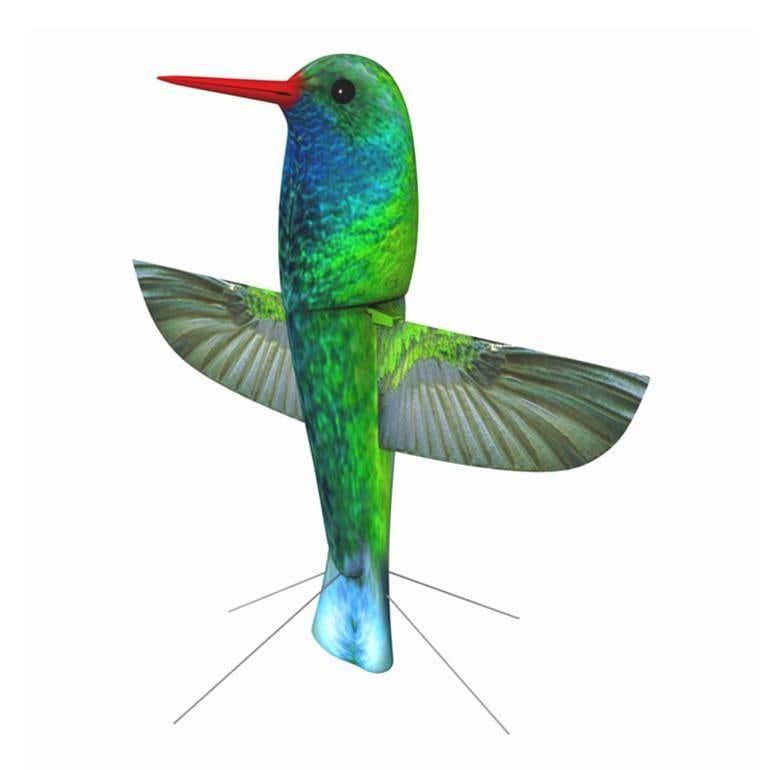 |
| Photo courtesy DARPA |
AeroVironment (AV), based in Monrovia, Calif., announced a series of contracts and displayed its research efforts at the annual Association of Unmanned Vehicle Systems International (AUVSI) conference and exhibition this week in Washington, D.C.
AV on Tuesday demonstrated its prototype Hummingbird micro air vehicle, developed for the Defense Advanced Research Projects Agency’s (DARPA) Nano Air Vehicle (NAV) Program, which was launched in 2005 to develop flying systems that could fit in one hand. The company said the Hummingbird is the first aircraft that can fly in hover flight with two flapping wings. The prototype aircraft has a wingspan of 6.5 inches tip-to-tip and has a total flying weight of 2/3 ounce. This includes all the systems required for flight –– batteries, motors, communications systems and video camera. It can travel 15 miles per hour and can fly for 11 minutes. The prototype displayed on Tuesday is capable of climbing and descending vertically, flying sideways left and right, flying forward and backward, as well as rotating clockwise and counter-clockwise, using a remote control.
The prototype includes all commercial-off-the-shelf electronics, but future improvements to the UAS include the addition of custom electronics and GPS systems, according to Matt Keennon, AV lead engineering for the Hummingbird program. Keenon said the company recently completed its DARPA funding phase and is looking for additional funds to continue development of the system.
Also on Tuesday the company announced it had received a $65 million contract, the largest in the company’s history, for new digital Puma All Environment UAS and initial spares packages. Deliveries are scheduled to be completed over the next several months. Each Puma system, a member of the company’s family of small UASs, consists of three air vehicles and two ground control systems. The air vehicle carries an integrated electro-optical and an infrared gimbaled video payload, is designed for enhanced durability in land and maritime environments and can operate effectively in foul weather and over rugged terrain. The Puma air vehicle weighs 13 pounds, is battery powered and has a flight endurance of two hours.
“Puma systems have demonstrated their effectiveness and are receiving high marks from customers for their image quality and overall capabilities,” said Tom Herring, AeroVironment senior vice president and general manager of its Unmanned Aircraft Systems business segment. “Like Raven and Wasp, Puma is helping to expand the role of small unmanned aircraft systems, and in the process is protecting our forces and helping them do their jobs more effectively.”
The small UAS “leads the way as the most accessible, responsive and field expedient,” Maj. Jeff Poquette, U.S. Army assistant product manager for small unmanned aircraft systems, told reporters at AUVSI on Tuesday. “They can show us how the enemy thinks.”